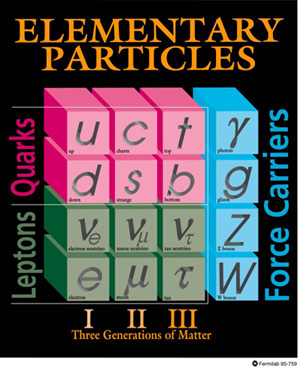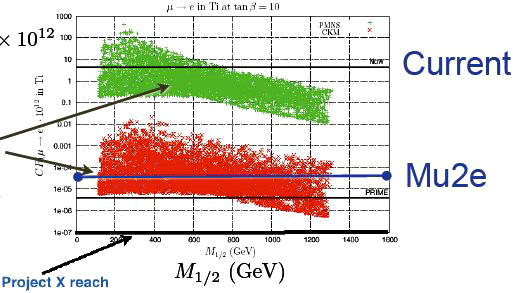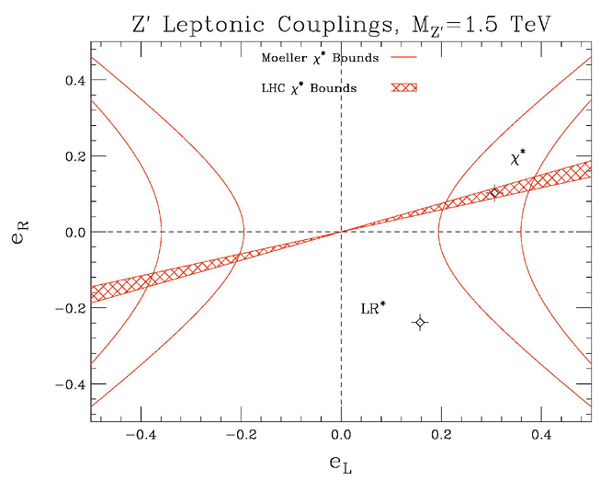
INSTITUTE FOR NUCLEAR THEORY
News
Home | Contact | Search | News archive | Site Map

|
INSTITUTE FOR NUCLEAR THEORY News
Home | Contact | Search | News archive | Site Map |
|||||
Low Energy Precision Electroweak Physics in the LHC Era
Our current understanding of the fundamental constituents of matter and their interactions (except for gravity) is encoded in the so-called Standard Model (SM) of strong and electroweak interactions. The SM describes the interactions among matter constituents (quark and leptons) mostly in terms of the exchange of spin-1 force carriers (gauge bosons). Phenomenology indicates that the strong gauge symmetry is unbroken, while the electroweak gauge symmetry is spontaneously broken by the vacuum state and the resulting gauge bosons (W,Z) are massive. To date, the SM has proved to be a very successful description of Nature at energy scales below the weak scale (~ 200 GeV). The only aspect of the SM not fully tested concerns the electroweak symmetry breaking mechanism, which in the SM is realized via the simplest Higgs sector (involving one new scalar neutral particle not yet observed).
Fig 1. The table of elementary particles.
Despite the successes, the quest for dynamics beyond the SM is triggered by a number of observational and theoretical issues that find no answer in the SM, such as: What makes up dark matter and dark energy? What is the origin of the matter-antimatter asymmetry in the Universe? What stabilizes the ratio of the weak and Planck scales against large quantum corrections (hierarchy problem)? What is the origin of fermion generations and their pattern of masses and mixing?
In order to probe the (expected) new physics beyond the SM, there are two complementary strategies: (i) go to high energy and try to directly excite the new massive degrees of freedom. This is the so-called Energy Frontier, being explored at the Large Hadron Collider (LHC). (ii) Perform high-precision low-energy measurements that are sensitive to new degrees of freedom though quantum corrections. This is the Precision/Intensity Frontier.
The purpose of the program "Low Energy Precision Electroweak Physics in the LHC Era" (Sept 22 - Dec 5 2008) was to review the status and explore future directions in the searches for physics beyond the SM through the Precision/Intensity Frontier.
During the program we have covered a broad range of accessible energy scales for such searches, from table-top to accelerator-based experiments, drawing theorists and experimentalists together. Special emphasis was placed on the complementarity to direct signatures of new physics from the Energy Frontier (the latter was the focus of a dedicated Collider Physics Symposium, September 29 - October 1, 2008). Topics of special interest to the Precision/Intensity Frontier (due to upcoming new experimental facilities) have been discussed in mini-symposia.
The symposium "Muon Physics in the LHC Era" (October 27-29, 2008)focused on the rich opportunities to detect new physics beyond the Standard Model through (i) the search for Lepton Flavor Violating (LFV) decay modes, that are essentially forbidden in the SM and provide hints on the family structure of SM extensions; (ii) the search for deviations from the SM expectation in the precision measurement of SM-allowed observables (such as the muon anomalous magnetic moment). Both types of searches are highly complementary to LHC physics, in that they can help discriminate new physics scenarios compatible with a hypothetical LHC discovery, and/or teach us about aspects of a given new physics scenario that are not accessible at the LHC.
For example, the structure of generation mixing in SM extensions is hardly accessible at the LHC, while it is best probed by analyzing LFV processes. Fig.2 illustrates precisely this point: within a supersymmetric SO(10) grand-unified model, the pattern of right-handed neutrino mixing can be lepton-like(PMNS), with large mixing angles, or quark-like (CKM) with small mixing angles. The figure shows the behavior of the μ→e conversion rate (in Ti nuclei) versus the gaugino mass parameter M1/2 in the cases of PMNS-like mixing (green) and CKM-like mixing (red) in the right-handed sector. The plot also contains lines corresponding to the current experimental bound and the reach of the proposed experiments Mu2e (Fermilab) and PRIME (J-Parc), showing that future measurements can actually distinguish the mixing pattern. Although Fig.2 deals with a very specific new physics model, it does nicely illustrate the discriminating power of charged LFV experiments, which is a generic feature.
Fig 2. The μ→e conversion rate (in Ti nuclei) versus the gaugino mass parameter M1/2 in the cases of SO(10) SUSY models with PMNS-like mixing (green) and CKM-like mixing (red) in the right-handed sector (from talks of R. Bernstein and A. Masiero).
The symposium "Electroweak Tests with Parity-Violating Electron Scattering in the LHC Era" (November 6-8, 2008) first summarized the theory and experiments that have made feasible a new generation of precision tests of weak neutral current interactions and then discussed in detail the physics potential of the new experiments as well as the theoretical issues that must be tackled to faciliate clean interpretability of the proposed measurements.
Three classes of future parity-violation experiments were extensively discussed. The Qweak experiment at Jefferson Laboratory (JLab) will study elastic electron-proton scattering and is under construction. A plan for improving the theoretical uncertainties from a challenging class of radiative corrections was formulated. Two experiments at JLab, one using the current 6 GeV electron beam and the other the upgraded 11 GeV beam, will look at deep inelastic scattering. Finally, a plan is under development to use the latter beam to improve by a factor of five the asymmetry measurement in parity-violating Møller scattering made by SLAC E158.
Since the conclusion of the workshop the latter two proposals have been submitted to the JLab 11 GeV Program Advisory Committee (PAC) and have received approval i.e. endorsement of the physics goals. This allows the experimental collaborations to pursue a detailed technical design and agressively search for funding for the projects. The symposium environment fostered extensive discussion among theorists and experimentalists about the physics potential of the proposed measurements. This resulted in a much-improved theoretical motivation section in the JLab proposals and was likely an important component in the subsquent positive endorsement by the PAC.
An example of the enhanced physics motivation to come out of the discussions is shown in Fig. 3. The Møller measurement will be sensitive enough to see a deviation from the SM prediction for a 1.5 TeV heavy neutral gauge boson in specific models. It would thus be complementary to measurements made at the LHC. The figure shows how the two measurements complement each other to separate out the left- and right-handed leptonic couplings of the new gauge boson.
Fig. 3. Projected uncertainties from LHC measurements of leptonic Z' decays (red hatched area) and from the proposed JLab Møller measurement (solid lines) for the so-called Zχ model (from talk of F. Petriello).
Overall, the INT program "Low Energy Precision Electroweak Physics in the LHC Era" summarized the recent developments and outlined short- and intermediate-term challenges in the searches for physics beyond the SM through the Precision/Intensity Frontier.
(INT Program September 22 - December 5, 2008)
Reported by V. Cirigliano, J. Erler, K.S. Kumar, M.J. Ramsey-Musolf
Date posted March 19, 2009
![]()

These considerations lead us to believe that the SM is the low-energy limit of a more fundamental theory which might involve new degrees of freedom and new interactions, so weak at low energy that they have escaped detection so far.

